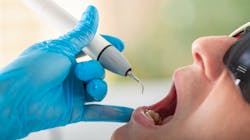New RDH survey: Hygienists are questioning the use of ultrasonic instruments during the pandemic
A recent survey was conducted with the RDH community to understand the choices hygienists are making when going back into the office. When we asked, “Will you be using your ultrasonic?” the results were quite surprising, and a few were shocking.
Survey results were quick to come in, with 38% of dental hygienists saying they would not be using their ultrasonic, and 34% not sure. Only 28% were a solid “yes” they would be returning to their offices to use their ultrasonic.
In addition to the survey results, personal comments were numerous and provided further information and insight into the uncertainty of these times. With over 600 comments, the opinions, recommendations, and fears of the unknown were shared in each message. Read them here.
Dental hygienists value providing our patients with the best standard of care and we are held accountable for using professional clinical judgement. We each went through an educational process and were required to pass testing to prove we knew what was best for ourselves and for our patients.
Because of the qualities and virtues of a dental hygienist, both opinions (ultrasonic or not) must be respected, as they are both correct in their own ways.
We understand the value of the ultrasonic and realize how the removal of the biofilm with vibrations, water and subgingival disruption, benefits the patient’s healing process. The standard of care has been to use ultrasonic instruments to remove biofilm and practicing without them could be considered substandard care.
The patients could be concerned if they believe they are not receiving the quality of care they had become accustomed to. And there are many who will believe that not using an ultrasonic is going back in time and is not providing our patients the standard of care which is proven to be most effective. See this discussion between Debbie Zafiropoulis, RDH, and Dr. Pamela Maragliano-Muniz on this topic.
The RDH choosing to proceed with the ultrasonic may have the proper PPE and high-volume evacuation (HVE) systems to control the aerosols and have taken the opportunity to share their protocol with the internal team.
The fear of aerosols is a proven, factual, legitimate concern. We must be respectful of the RDH who is concerned about the aerosols floating in the operatory. Aerosols are present for an estimated three hours after each patient treated, which is a concern for other patients and the staff transitioning throughout the operatories all day.1
Many are waiting for confirmed guidelines that will protect our patients, our team, and ourselves. We are waiting for information and research that will define what PPE is safest, while we wait for our employers to purchase them or the manufacturers to have them in stock. The RDH choosing to use hand instrumentation may not have information confirming their PPE, HVE, or defined protocols within their offices.
With these two strong platforms, it has become most understandable why we have not only a difference of opinions between dentist and dental hygienist, but also among the hygiene community. We are all traveling through the unknown and each opinion is to be respected.
Communication is the key
The question is still lingering whether an RDH would use their ultrasonic if they had the proper PPE and HVE, and if they knew this would be enough to protect all individuals involved. We had similar fears in the mid ‘90s with HIV and AIDS. The fear of the unknown pushed some RDHs out of the operatory while many embraced the challenge and put faith in their knowledge of universal precautions and their skill sets. It has yet to be determined if similar ventures will occur within the operatory while tackling the unknown of COVID-19.
There have been numerous webinars and open discussions to educate the RDH community and if you seeking additional information, you may find answers from discussions on our weekly Ask Amber live stream or watching a recent discussion between Dr. Pamela Maragliano-Muniz and Amber Auger, RDH, in which a dentist and a dental hygienist have open communication of how each professional is looking into the future and how they can find the answers by sharing two different opinions and areas of concern.
RDH magazine and our partner publication DentistryIQ have also been compiling COVID-19 resources and news.
You may find ideas, answers, or knowledge you could share with your dentist. It will all come down to communication and showing respect as we embrace the new norm.
Resources
Whether you are choosing to use your ultrasonic or not, the ADHA Interim Guidance on Returning to Work, the CDC’s Interim Infection Prevention and Control Guidance for Dental Settings, and the Occupational Health and Safety Administration will provide the professional recommendations to support your decisions.
If you are looking for instructional training for your team, a check list and the requirements of an Infection Control Officer be sure to visit the Organization for Safety Asepsis and Prevention’s website.
Reference
1. Froum S, Strange M. COVID-19 and the problem with dental aersols. Perio-Implant Advisory. April 7, 2020. https://www.perioimplantadvisory.com/periodontics/oral-medicine-anesthetics-and-oral-systemic-connection/article/14173521/covid19-and-the-problem-with-dental-aerosols
Jackie Sanders, MBA, RDH, has over four decades of continual career development and experience in dentistry. As the chief editor of RDH magazine, she strives to remain a proactive personality in the continual advancement of the profession. She has been defined as a motivated trendsetter and dependable colleague and is inspired by her true passion of helping others to achieve their personal goals. Her personal commitments: “it’s important to be happy, be a positive influence, and make a difference.”
About the Author

Jackie Sanders, MBA, RDH
Chief Editor, RDH magazine
Jackie Sanders, MBA, RDH, has over four decades of continual career development and experience in dentistry. As the chief editor of RDH magazine, she strives to remain a proactive personality in the continual advancement of the profession. She has been defined as a motivated trendsetter and dependable colleague and is inspired by her true passion of helping others to achieve their personal goals.




